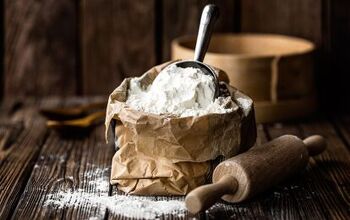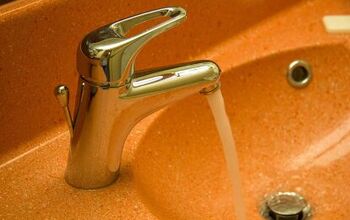How To Remove Paint From Plastic (Step-by-Step Guide)

While it can be relatively simple to strip paint from wood, ceramic, or metal, plastic requires a little more careful attention to ensure that the material stays undamaged. The more conventional stripping methods that involve harsh chemicals will not work, as they can easily melt or damage the plastic. Lucky for you, since plastic is non-porous and smooth, it’s actually exceptionally rare for paint to form a permanent bond to it.
It will be much easier to remove paint from plastic if you act quickly. However, it can still be scraped off when it dries up. For the more tough paint stains, all you’ll need is a little bit of acetone or rubbing alcohol to free its bond from the plastic surface.
After all, even to the most conscientious DIYers, accidents still happen. Although it may take a little bit more effort to remove paint from plastic, it can be done. The methods outlined below will help you to banish any evidence of this incredibly common home improvement mishap.
Washing Off Fresh Paint From Plastic
Although it isn’t always possible, tackling paint while it is still wet is the easiest way to remove it from plastic surfaces. As the paint starts to dry, it becomes much more difficult to clean off. Using this method of washing fresh paint works best on plastic items that can get wet. Alternatively, if you’re trying to clean paint off of an electronic, use extra care and unplug the device or remove its batteries first.
- Create a solution of warm, soapy water. Fill a bucket of warm water from the tap and deposit a few pumps of mild dish soap into it. If you don’t have any dish soap on hand, any sort of liquid soap will suffice. Stir the solution to combine the soap and water.
- Submerge small, water-safe items into the bucket of warm soapy water. Dip the item in so that it is completely submerged. If needed, rotate the item to coat all sides. You’ll only need to soak the areas of the item that have paint. While it is underwater, use either a sponge or your fingers to scrub off the paint.
- For larger items, dip a sponge into the soapy water. If you’re cleaning an electronic, you should squeeze out the excess water before scrubbing. Otherwise, simply wipe the paint off of larger items using a saturated sponge. Since the item is not completely submerged in water, you may need to complete several passes with the sponge to fully eradicate the paint.
- Rinse the item with clean water. For small items, hold the item under running water until you’ve cleaned off all of the soap and paint residue. If you’re working with a larger plastic item, you can use a hose or pour a bucket of water over it to clean. For items that should not get wet (like electronics), to rinse you can use a damp rag and then wipe off the residue with a dry cloth.
- Allow the item to dry completely. To dry your plastic item, you can place it in a well-ventilated space to air dry, or pat dry using a towel. For electronic items, make sure that you wait until it has dried completely before plugging it back in or re-inserting any batteries. In fact, you should wait between 24 and 48 hours to ensure that there is no water inside the device.
If simply washing the paint off of the plastic doesn’t do the job, you can try scraping it off or applying a solvent.
Scraping Off Dried Paint From Plastic
This method is ideal for paint that his fully dried on plastic surfaces. However, it may still be effective for latex or acrylic paint that has only slightly dried and has a rubbery texture. For dried paint, follow these steps for cleaning it off of plastic:
- For thick globs of paint, soak the area in rubbing alcohol. This step is optional but may make thicker paint stains easier to remove by loosening them from the surface. Simply pour enough rubbing alcohol over the item to cover the entire painted area without wiping it off. For optimal results, use a 91% or 99% rubbing alcohol product. If you’re working with electronics, use a paper towel soaked in rubbing alcohol instead of pouring it directly on the paint.
- Select a scraping tool. To scrape the paint off of the surface you can use a paint scraper, flathead screwdriver, or your own fingernail. Paint scrapers are the ideal choice for flat surfaces, whereas, your fingernail or a flathead screwdriver will work best on curved items. Keep in mind that screwdrivers and paint scrapers may scratch some types of plastic. If this is a concern, use your fingernail to avoid potential damage.
- Scrape the paint off of the plastic. Position the scraping tool on an angle against the edge of the paint stain. The direction that you scrape will vary based on the tool that you are using. For screwdrivers and paint scrapers, you’ll want to push against the paint. If you’re using your fingernail, you should move in the opposite direction, dragging it across the paint to remove.
- Continue scraping until the paint is mostly gone. Do not worry if you still have some lingering paint. The next steps will help to free up any residue so it can also be removed.
- Rinse any residue with oil or water. You can use water or vegetable oil to help lubricate the plastic surface and lift up the remaining paint. This will make scraping it off much easier. Simply pour a bit of either water or oil onto the paint, and continue your scraping motion.
- Clean the plastic surface. Once you’ve successfully removed all the paint from the plastic by scraping, you can wipe it clean. Soak a rag or sponge in clean water, squeeze the excess out and wipe the plastic surface free of any residue. Follow up by patting the surface dry with a clean cloth or allowing it to air dry.
If you’re still having difficulty removing the paint at this point, using a solvent may be your best course of action.
Choosing a Solvent
When all else fails and you have an exceptionally stubborn paint stain on your hands, you’ll have to resort to using a solvent. However, you should use extra care selecting the appropriate solvent for the job, as some can damage certain types of plastic or even result in melting. Here are some options for solvents that are effective at removing paint from plastic:
- Ammonia: Ammonia is a compound that consists of nitrogen and hydrogen (NH3). This solvent is best suited for removing latex and acrylic paint from plastic surfaces.
- Mineral Spirits: Although most commonly used as a paint thinner, mineral spirits is an affordable petroleum distillate and an incredibly versatile household cleaner.
- Rubbing Alcohol: Rubbing alcohol, and especially isopropyl alcohol, are very effective at dissolving paint. If you choose this option, make sure that you select the highest percentage available: 91% or 99%. Any percentage lower and the rubbing alcohol will not have much of an effect on removing paint.
- Vegetable Oil: When you use vegetable oil as a solvent it acts as a lubricant that loosens the bond between the plastic surface and paint stains. While it is not as effective when compared to other solvents, it works best on oil-based paints. It also poses no threat to damaging or melting plastic surfaces.
- Acetone: Acetone, and even nail polish removers that contain acetone, are very successful at removing paint from plastic. Nail polish removers are petroleum-based solvents that typically contain acetone. Although they are quite popular for removing nail paints, they are also well-known for dissolving paint on plastic surfaces.
While acetone is a great solvent for removing paint, it can cause damage to certain types of plastic. You should avoid using acetone on vinyl-based plastic and plexiglass. On the other hand, it is completely safe when used on polyester resin or fiberglass materials. For those with sensitive skin, consider wearing gloves for this method of removal, regardless of the solvent you choose.
How to Use Solvents for Removing Paint From Plastic
After you’ve selected your solvent of choice, follow the steps outlined below to remove tough and stubborn paint stains from plastic.
Step One: Testing The Solvent
Before you begin applying the solvent to the entire plastic surface, you should first test it in an inconspicuous area. Since different types of solvents react differently to different types of plastic, you’ll want to ensure that no damage can occur. Use a Q-tip or a small paintbrush and apply the solvent to an unobtrusive spot on your item. Wait a few minutes, rinse it off, and examine the surface.
If you don’t notice any negative effects on the plastic, the solvent is likely safe to use. However, some solvents may not cause a reaction for several hours. If you notice any changes in texture or color to the plastic, choose a different solvent. Additionally, if you create an indent by pressing on the plastic, do not use the solvent.
Step Two: Using Solvents on Small Areas
If you have only small paint stains on your plastic, you can use a cotton ball that is soaked in your solvent. Acetone is best suited for this method, but rubbing alcohol can work as well. Simply rub your solvent soaked cotton ball over the small painted area of your plastic item until the paint falls off.
When the cotton ball becomes soiled, discard and grab a new one. Since acetone evaporates quite quickly, you may have to re-soak the cotton ball frequently. If you don’t, the fuzz from the cotton ball will stick to the paint.
Step Three: Using Solvents on Stubborn Stains
For tougher stains that do not respond to the cotton ball, you can use a stiff-bristled brush. Pour acetone or rubbing alcohol directly onto the paint stains, and use the stiff-bristled brush to scrub it until the paint comes off.
You should avoid using any brushes that are made of nylon, as the acetone can melt the bristles.
Step Four: Using Solvents on Fully Painted Items
For plastic items that are fully painted, you’ll want to submerge it in the solvent before you attempt to scrub off the paint. Put your item into a container and fill it up with enough solution to cover it completely. Let the item sit in the solution for up to an hour before pulling it out.
Quick Tip: For best results, use household cleaners or paint thinner for this method. Most plastic items can be soaked in these solvents for up to 24 hours.
This will allow the paint to loosen enough to be scrubbed off. Once removed from the solution, use a manicure brush or stiff-bristled toothbrush to scrub off the paint. If you still have residue after your first scrubbing, dip the item back into the solution and make a second attempt. Afterward, use soap and water to clean your plastic item and let it dry.

Jessica considers herself a home improvement and design enthusiast. She grew up surrounded by constant home improvement projects and owes most of what she knows to helping her dad renovate her childhood home. Being a Los Angeles resident, Jessica spends a lot of her time looking for her next DIY project and sharing her love for home design.
More by Jessica Stone



























![Cost To Drill A Well [Pricing Per Foot & Cost By State]](https://cdn-fastly.upgradedhome.com/media/2023/07/31/9074980/cost-to-drill-a-well-pricing-per-foot-cost-by-state.jpg?size=350x220)